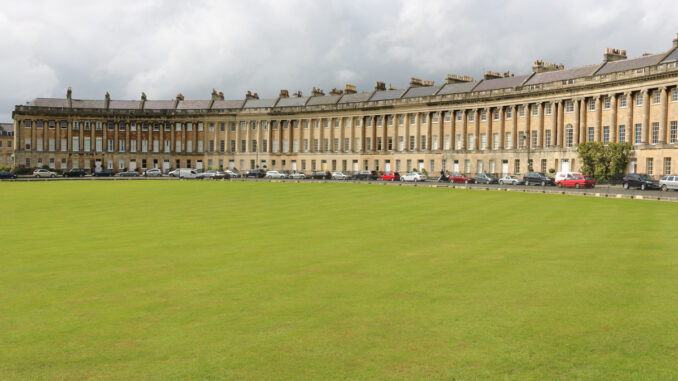
A major landmark and popular tourist destination in Bath, England, is celebrating 250 years.
The foundation stone for the Royal Crescent, a semicircle row of Georgian townhouses, was laid on May 19, 1767. To honor the milestone, the city of Bath and local museums are hosting a year-long celebration.
Architect John Wood the Younger designed the Royal Crescent, which was built between 1767 and 1774 and is famous for its row of Ionic columns that measure 30 inches in diameter and up to 47 feet tall. While the façade of the building maintains a uniform look, the building’s rear features a mishmash of designs, lending to the term Queen Anne fronts and Mary-Anne backs.
Two of the units — Nos. 2 and 7 — were gutted by incendiaries dropped during the Baedeker Blitz (or Raids) during World War II. One of the abodes — No. 1 Royal Crescent — has been preserved as a museum and gives visitors a window into 18th century life.
Complete with authentic furniture and artifacts, each room tells a story of daily life 300 years ago. In one of the rooms, the Gentlemen’s Retreat, visitors can learn more about Henry Sandford, the town house’s first resident who lived here from 1776 until 1796.
Interestingly, the building was originally named The Crescent. It assumed the Royal portion of its name after Prince Frederick, Duke of York and Albany visited in the 18th century.
Of course, Bath is a popular destination for many reasons, including its famed Roman Baths. Click here for more information on what to see in Bath.
The Foundation stone is (re) laid @No1Museum @royalcres250 @VisitBath pic.twitter.com/BM9rMXyhS4
— No.1 Royal Crescent (@No1Museum) May 21, 2017





